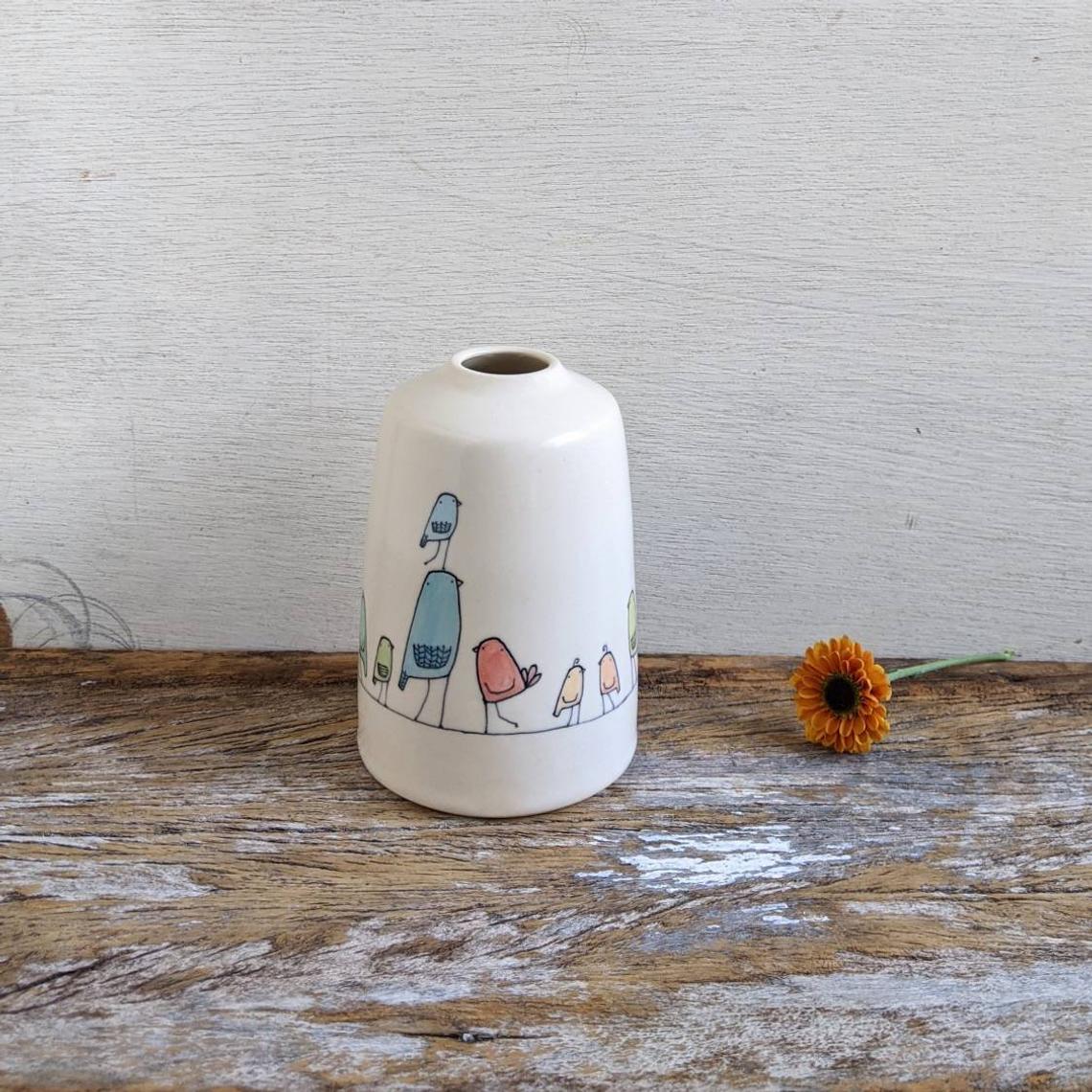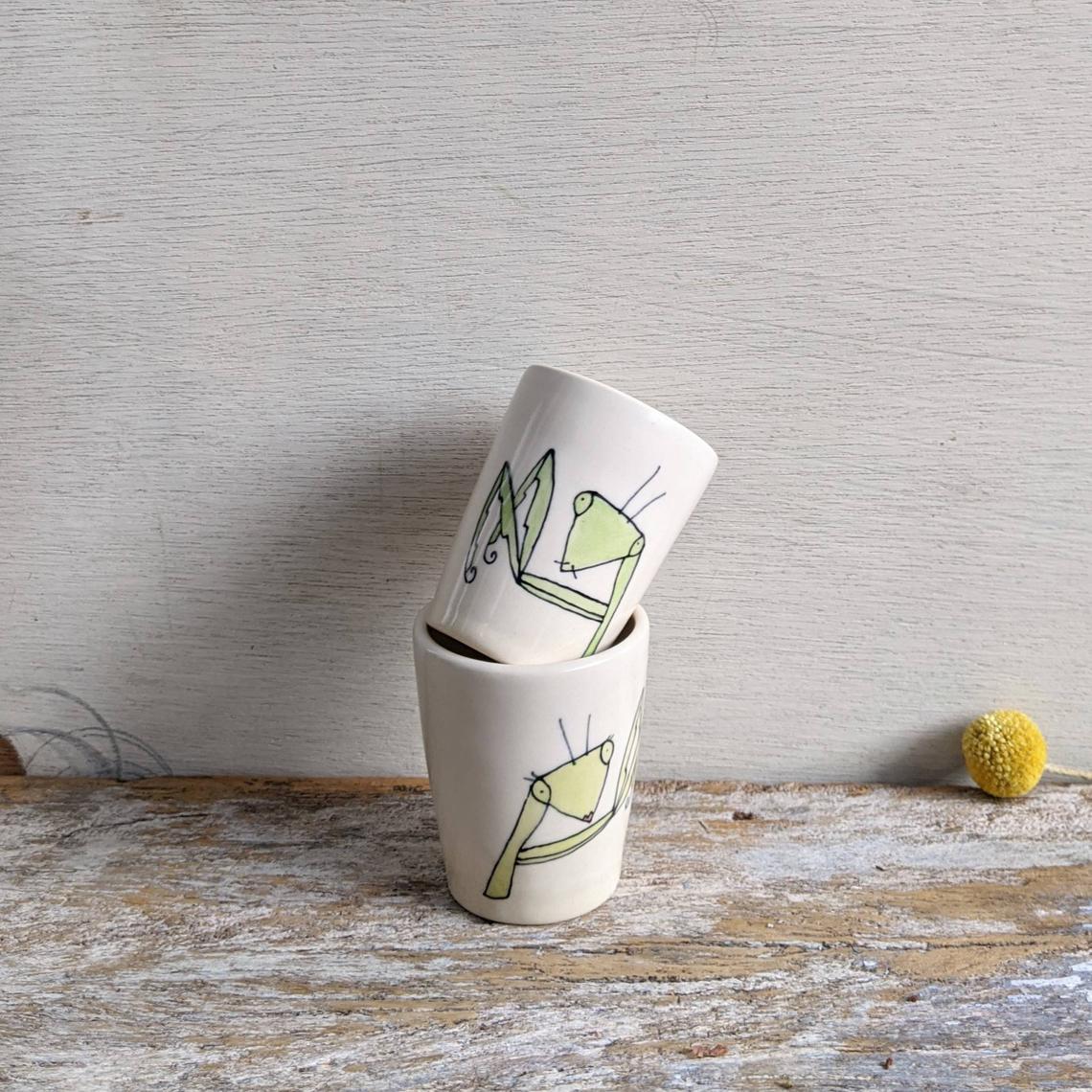By Brian Hendershot
This year's Crocker Holiday Artisan Market (CHAM) has been cancelled due to Covid-19. In recognition of the unique, financial constraints members of the creative community are facing, we're highlighting five artists we think best represent the show. You can see the entire artist directory by clicking here. This year, 100-percent of the proceeds will go to the artists. Be sure to read last year's roundup as well! Like what we're doing? Consider shopping the Museum Store or giving the gift of membership this holiday season.
Catherine Reece is ceramist based in Dublin, California, best known for her whimsical depictions of birds, bugs, and the occasional candy cane. We briefly chatted by email about her art and inspiration. The exchange has been edited for clarity and length.
Who are you and what do you do?
I'm Catherine Reece; I create functional pottery to use as a blank canvas to express myself. I find beauty in nature and am continually attracted to the natural world. I always enjoyed drawing, having grown up in an arts and crafts family. I was influenced by my mother and grandmother as they used their hands to create beautiful objects.
Customers love my whimsical, nature-inspired drawings. Many say that they use my pottery every day as it brings a smile to their faces.

How did you get into ceramics?
I grew up in the foothills of southern California in a little-known town called Sierra Madre. I always had an interest in art and took to drawing at an early age. At my local community college, I always gravitated toward the arts. After a time, I found myself completely absorbed in art classes, one of which was a ceramics class taught by Phil Cornelius, which I enjoyed very much.
A few years passed; I got married and worked as a floral designer when the pottery bug bit once again. I found myself taking classes in a small local studio, and this re-energized my creativity. Before I knew it, I had a surplus of pottery and decided to get involved in a local art fair with two other ceramic artists. I did very well and soon my husband and I turned pottery making into a business. In 2004, we moved to Northern California to devote our energy to working in clay full time, selling all over California, Arizona, Oregon, and Washington.
Twenty-five years later, we have two teenage kids and we’re still making pottery. I still enjoy going to work every day creating art that makes people happy.
What was it about Phil's class that you enjoyed so much? Did you incorporate any of his teachings/style into your work?
It wasn't so much about Phil; it was a new medium. Until then, I had been working in 2-D art — intaglio printing, drawing, and photography. I enjoyed the clay. It was just a class where I was instructed on how to make a bowl or a mug or hand-build something. I was a beginner, so I made beginner things. My instructor could have been anyone. I may see some detail of what another artist does and incorporate that, but stylistically I learn my own way. I did it for about two years. But then life changed, and it fell away for a while.
Do you mind expanding on the influence of your mother and grandmother? Did they also work in ceramics? How does their work impact your work?
My mother and grandmother didn't work in ceramics. They were crafters — my mother sewed mostly. She made dolls and quilts and other kinds of fabric objects. My grandmother worked in wood and made small furniture pieces and whirligigs. Just growing up in a house where the women worked with their hands made an impression. Being an artist seemed natural — like a fish in water.
For some artists who grow up in a family of doctors and lawyers, breaking away from what the family knows can be hard. For me it was easy. It was something we all did. My mother would also hold yearly boutiques during the holidays and would gather a group of women and display their work for sale. I never sold anything there, but it was just another natural progression to what I do — selling at art fairs and having an online store.

You said, "I find beauty in nature and am continually attracted to the natural world." Can you expand on that? A lot of people don't find insects particularly charming, yet you make me want to cuddle a cockroach. How do you see what others can't? How do you turn a creepy-crawly into something cute?
When I was first married, I traveled to Wisconsin with my husband's family. They have a house near a lake, surrounded by forest. My mother in law is a self-taught naturalist and was president of the board at the Cable Natural History Museum there. She had a microscope set up in her studio space. I found a dead dragonfly one day and stuck it under the microscope. Seeing that insect up close was a game changer: The colors and the intricacies of its body and wings really stood out to me. I was fascinated by its lines.
I started using a carving tool to make lines in my clay pots to render other insects. I even did a few portraits of van Gogh. I stumbled across the underglaze pen and a way to directly apply neat, black lines to the pottery. That changed everything for me. It was the bridge between clay and drawing. I didn't look back. When I render something as detestable as a cockroach on a plate or mug, what people get is my interpretation. The insects are divorced from their world and created in mine. They are an extension of my personality and not theirs. That is the difference, I think.
Click here to see more of Catherine Reece's work or to order one for yourself.
Images courtesy of the artist.
About the author: Brian Hendershot serves as the Crocker's primary support editor, writer, and occasional audiovisual editor. Before joining the Crocker, he was the Head of Communications at the Museum of the Red River in Oklahoma. He also sat on the McCurtain County Historical Board of Directors and the Crocker's MASS Action Committee. He received his MA in Communications at Drury University in Missouri.


